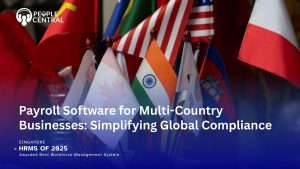Have you ever wondered why Singapore works with this foreign worker levy system? Being one who is aware of Singapore’s labor policies, such a seemingly complex set of fees is usually one of the most critical tools available for managing our foreign workforce. Clear-cut negotiations are worth their salt in the matter under discussion.
Understanding the Basics
At its core, the foreign worker levy is a pricing mechanism – essentially a monthly fee that employers must pay for each foreign worker they hire. But it’s much more than just another business expense. Think of it as Singapore’s way of ensuring sustainable and controlled growth of our foreign workforce while protecting local employment opportunities.
Foreign Worker Levy: The Key Objectives
The foreign worker levy serves multiple strategic purposes:
1. Managing Foreign Worker Dependencies
According to the Ministry of Manpower (MOM), the foreign worker levy augments the brakes to prevent businesses from undue dependence on foreign workers. This you could say is designed to provide businesses with sufficient motivation to think, twice if needed, before referring all hiring to foreign sourcing. Source: Ministry of Manpower – Foreign Worker Levy.
2. Increasing Productivity and Innovation
Interesting-that is, when foreign labor becomes increasingly costly, businesses most often tend to invest in:
- Automation Solutions
- Process Improvements
- Technology Adoption
- Skills Upgrading for Existing Workers
And this push toward productivity is good not just for the companies but is actually woven into the long-term economic sustainability of Singapore.
3. Safeguarding Local Employment
Let’s be earnest-all things considered, if it were not for the levy, their choice might lie towards engaging foreign laborers who pose to make lesser salary demands. The antibody that forbids hiring of local workers remains financially appealing, more so in professions that demonstrate that there are Singaporeans ready, able, and willing to work.
Also Read : What Are The Benefits of HR Software in 2025?
How Does it Work in Practice?
The levy rates do not formulate one policy to be used in each situation:
- The sector-type (Construction/Manufacturing/Service)
- The skill level of a worker (basic skilled/skilled)
- The proportion of organizations’ workers are foreign
By way of illustration, in the construction sector, the levy rate for a basic-skilled worker can vary anywhere in the neighborhood of S$300-S$700, depending on the foreign worker ratio within the company.
Foreign Worker Levy: Impact on Different Stakeholders
For the Business
Small and medium enterprises, i.e. SMEs feel this pinch most acutely. Imagine one small construction company – with every additional foreign worker, a further monthly levy has to be paid, and that is an additional dent on your bottom-line profit! Still, such “pain” is intentional to spur businesses to:
- Look into their manpower needs
- Experience productivity improvements
- Consider hiring locally
For the Economy
In the wage determination process, it helps maintain a little lateral movement of the wage across various sectors, setting the stage for workplace improvements and economic shifts in the island.
For Local Workers
It is a shield that prevents a local from looking back at work opportunities and wages because it prevents the employer from just hiring a foreign worker on the basis of cost alone.
Recent Developments and Adjustments
Levy rates are periodically reviewed and adjusted by the government of Singapore according to:
- Economic conditions
- Feedback from industry
- Changes in the labor market
For example, during the SARS epidemic, the government provided levy waivers and rebates to businesses in order to assist them with the economic losses incurred.
Also Read : AI Integrated HRMS Software for Smarter HR Solutions
Final Remarks
The foreign worker levy may appear as yet another cost of doing business and an instrument to shape the management of labor supply in a more productive and productive-oriented manner. While it may present certain challenges to some businesses, it remains one of the pillars for supporting employment types and pushing for higher productivity improvements.
Therefore, for businesses in Singapore, it could not be said that understanding and working with this system is merely a compliance with the laws, but was rather like meeting the long-term goal of Singapore for an efficient, innovative, and sustainable economy.








 5
5


























